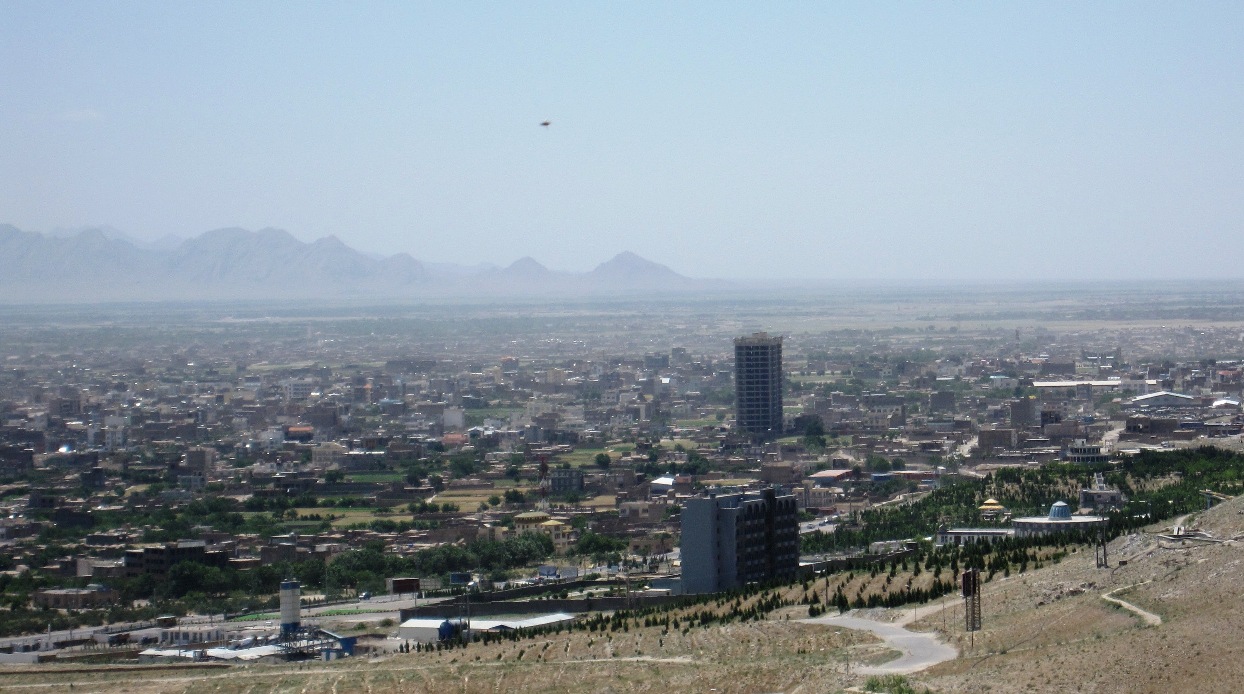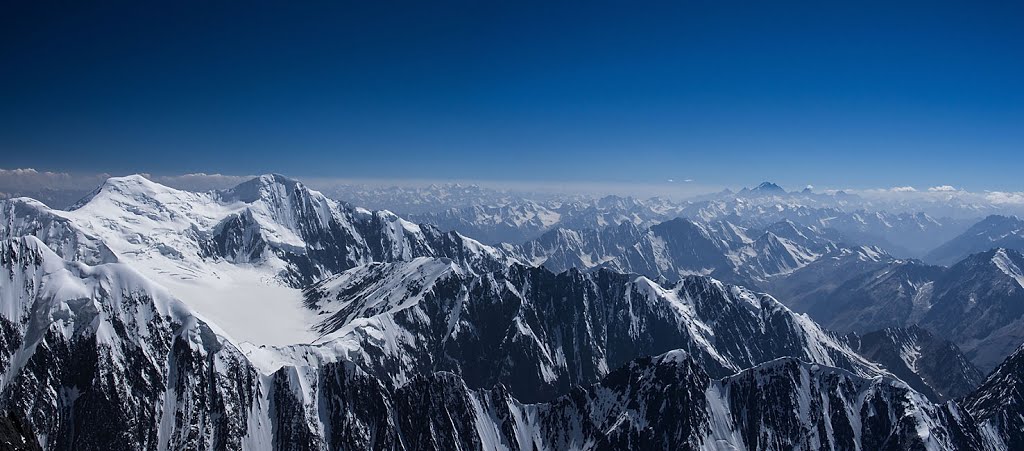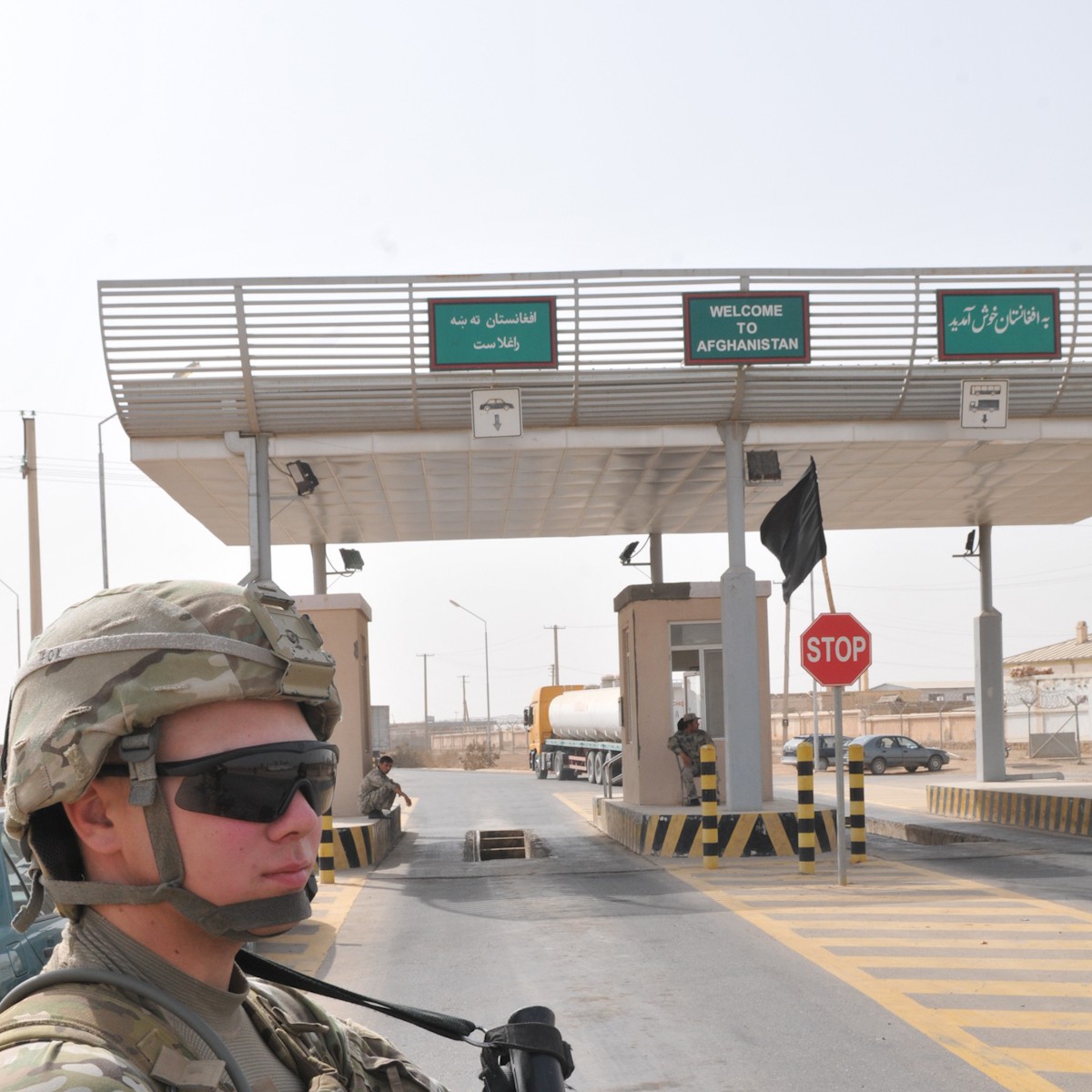|
Ayna TV
Ayna Television (تلويزيون آينه, also romanized ''Aiena Television'') was the first commercial television station broadcasting from Mazari Sharif, Afghanistan, starting in 2004 until 2022. The name Ayna means "mirror" in Uzbek. It aired entertainment and news programs as well as serving as an improvement tool for Abdul Rashid Dostum and his party, Junbish-i-Milli Islami Afghanistan, and at one point was reportedly owned by him. Ayna was set up in order to satisfy the entertainment needs of people in northern Afghanistan where Uzbek is widely spoken, but after a few years also started programmes in Dari Persian and Pashto languages. The signal of Ayna could be received throughout the northern province of Jowzjan as well as in the neighbouring provinces of Balkh, Faryab, Sar-e-Pol, Badghis, Herat, Ghor, Samangan, Takhar, Kunduz, Badakhshan, Baghlan, Bamyan, and other provinces including the Greater Kabul region. Sayed Fahim Zaffar, the person responsible ... [...More Info...] [...Related Items...] OR: [Wikipedia] [Google] [Baidu] |
Satellite Television
Satellite television is a service that delivers television programming to viewers by relaying it from a communications satellite orbiting the Earth directly to the viewer's location. The signals are received via an outdoor parabolic antenna commonly referred to as a satellite dish and a low-noise block downconverter. A satellite receiver then decodes the desired television program for viewing on a television set. Receivers can be external set-top boxes, or a built-in television tuner. Satellite television provides a wide range of channels and services. It is usually the only television available in many remote geographic areas without terrestrial television or cable television service. Modern systems signals are relayed from a communications satellite on the X band (8–12 GHz) or Ku band (12–18 GHz) frequencies requiring only a small dish less than a meter in diameter. The first satellite TV systems were an obsolete type now known as television receive-only. Thes ... [...More Info...] [...Related Items...] OR: [Wikipedia] [Google] [Baidu] |
Herat Province
Herat (Persian: ) is one of the thirty-four provinces of Afghanistan, located in the north-western part of the country. Together with Badghis, Farah, and Ghor provinces, it makes up the north-western region of Afghanistan. Its primary city and administrative capital is Herat City. The province of Herat is divided into about 17 districts and contains over 2,000 villages. It has a population of about 3,780,000, making it the second most populated province in Afghanistan behind Kabul Province. The population is multi-ethnic but largely Persian-speaking. Herat dates back to the Avestan times and was traditionally known for its wine. The city has a number of historic sites, including the Herat Citadel and the Musalla Complex. During the Middle Ages Herat became one of the important cities of Khorasan, as it was known as the Pearl of Khorasa The province of Herat shares a border with Iran in the west and Turkmenistan in the north, making it an important trading region. The Trans-Afg ... [...More Info...] [...Related Items...] OR: [Wikipedia] [Google] [Baidu] |
Persian-language Television Stations
Persian (), also known by its endonym Farsi (, ', ), is a Western Iranian language belonging to the Iranian branch of the Indo-Iranian subdivision of the Indo-European languages. Persian is a pluricentric language predominantly spoken and used officially within Iran, Afghanistan, and Tajikistan in three mutually intelligible standard varieties, namely Iranian Persian (officially known as ''Persian''), Dari Persian (officially known as ''Dari'' since 1964) and Tajiki Persian (officially known as ''Tajik'' since 1999).Siddikzoda, S. "Tajik Language: Farsi or not Farsi?" in ''Media Insight Central Asia #27'', August 2002. It is also spoken natively in the Tajik variety by a significant population within Uzbekistan, as well as within other regions with a Persianate history in the cultural sphere of Greater Iran. It is written officially within Iran and Afghanistan in the Persian alphabet, a derivation of the Arabic script, and within Tajikistan in the Tajik alphabet, a derivati ... [...More Info...] [...Related Items...] OR: [Wikipedia] [Google] [Baidu] |
Television Stations In Afghanistan
Television in Afghanistan started broadcasting in August 1978, flourishing until the 1990s, when hostilities in the capital Kabul destroyed broadcasting infrastructure. Between 1996 and 2001, the Taliban government outlawed television, though some stations in areas outside Taliban control continued to broadcast. After their removal, country-wide television broadcasting was resumed beginning with the government-run channel Afghanistan National Television. It was reported that Afghanistan currently has over 200 local and international television channels, 96 in Kabul and 107 in other provinces of the country. In 2014, the country commenced a switch from analog to digital TV transmission. History The conceptual foundation of television in Afghanistan was first elucidated by Dr. Hafiz Sahar, chief editor of ''Eslah'' national daily newspaper, in his 1967 investigative academic work at New York University. He made compelling argument and advocated, based on other developing countries e ... [...More Info...] [...Related Items...] OR: [Wikipedia] [Google] [Baidu] |
List Of Television Channels In Afghanistan
Television in Afghanistan started broadcasting in August 1978, flourishing until the 1990s, when hostilities in the capital Kabul destroyed broadcasting infrastructure. Between 1996 and 2001, the Taliban government outlawed television, though some stations in areas outside Taliban control continued to broadcast. After their removal, country-wide television broadcasting was resumed beginning with the government-run channel Afghanistan National Television. It was reported that Afghanistan currently has over 200 local and international television channels, 96 in Kabul and 107 in other provinces of the country. In 2014, the country commenced a switch from analog to digital TV transmission. History The conceptual foundation of television in Afghanistan was first elucidated by Dr. Hafiz Sahar, chief editor of ''Eslah'' national daily newspaper, in his 1967 investigative academic work at New York University. He made compelling argument and advocated, based on other developing countries e ... [...More Info...] [...Related Items...] OR: [Wikipedia] [Google] [Baidu] |
Taliban
The Taliban (; ps, طالبان, ṭālibān, lit=students or 'seekers'), which also refers to itself by its state (polity), state name, the Islamic Emirate of Afghanistan, is a Deobandi Islamic fundamentalism, Islamic fundamentalist, militant Islamism, Islamist, Jihadism, jihadist, and Pashtun nationalism, Pashtun nationalist political movement in Afghanistan. It ruled approximately three-quarters of the country Islamic Emirate of Afghanistan (1996–2001), from 1996 to 2001, before being overthrown following the United States invasion of Afghanistan, United States invasion. It Fall of Kabul (2021), recaptured Kabul on 15 August 2021 after nearly 20 years of Taliban insurgency, insurgency, and currently controls all of the country, although its government has Recognition of the Islamic Emirate of Afghanistan, not yet been recognized by any country. The Taliban government has been criticized for restricting human rights in Afghanistan, including the right of women in Afgh ... [...More Info...] [...Related Items...] OR: [Wikipedia] [Google] [Baidu] |
American Dollar
The United States dollar (symbol: $; code: USD; also abbreviated US$ or U.S. Dollar, to distinguish it from other dollar-denominated currencies; referred to as the dollar, U.S. dollar, American dollar, or colloquially buck) is the official currency of the United States and several other countries. The Coinage Act of 1792 introduced the U.S. dollar at par with the Spanish silver dollar, divided it into 100 cents, and authorized the minting of coins denominated in dollars and cents. U.S. banknotes are issued in the form of Federal Reserve Notes, popularly called greenbacks due to their predominantly green color. The monetary policy of the United States is conducted by the Federal Reserve System, which acts as the nation's central bank. The U.S. dollar was originally defined under a bimetallic standard of (0.7735 troy ounces) fine silver or, from 1837, fine gold, or $20.67 per troy ounce. The Gold Standard Act of 1900 linked the dollar solely to gold. From 1934, its equi ... [...More Info...] [...Related Items...] OR: [Wikipedia] [Google] [Baidu] |
Sayed Fahim Zaffar
''Sayyid'' (, ; ar, سيد ; ; meaning 'sir', 'Lord', 'Master'; Arabic plural: ; feminine: ; ) is a surname of people descending from the Islamic prophet Muhammad through his grandsons, Hasan ibn Ali and Husayn ibn Ali, sons of Muhammad's daughter Fatima and his cousin and son-in-law Ali (Ali ibn Abi Talib). While in the early islamic period the title Al-Sayyid was applied on all the members of the of banu hashim, the tribe of Muhammad. But later on the title was made specific to those of Hasani and Hussaini descent, Primarily by the Fatimid Caliphs. Female ''sayyids'' are given the titles ''sayyida'', ''syeda'', ''alawiyah'' . In some regions of the Islamic world, such as in Iraq, the descendants of Muhammad are given the title '' amīr'' or ''mīr'', meaning "aristocrats", "commander", or "ruler". In Shia Islam the son of a non Sayyid father and a Sayyida mother claim the title Mirza. In Sunni Islam a person being a descendant of Muhammad, of either maternal o ... [...More Info...] [...Related Items...] OR: [Wikipedia] [Google] [Baidu] |
Bamyan Province
Bamyan Province ( prs, ولایت بامیان) also spelled Bamiyan, Bāmīān or Bāmyān is one of the thirty-four provinces of Afghanistan, located in the central highlands of the Afghanistan. The terrain in Bamyan is mountainous or semi-mountainous, at the western end of the Hindu Kush mountains concurrent with the Himalayas. The province is divided into eight districts, with the town of Bamyan serving as its capital. The province has a population of about 495,557 and borders Samangan to the north, Baghlan, Parwan and Wardak to the east, Ghazni and Daykundi to the south, and Ghor and Sar-e Pol to the west. It is the largest province in the Hazarajat region of Afghanistan and is the cultural capital of the Hazara ethnic group that predominates in the area. It was a center of commerce and Buddhism in the 4th and 5th centuries. In antiquity, central Afghanistan was strategically placed to thrive from the Silk Road caravans that crisscrossed the region, trading between the ... [...More Info...] [...Related Items...] OR: [Wikipedia] [Google] [Baidu] |
Baghlan Province
Baghlan (Dari: ''Baġlān'') is one of the thirty-four provinces of Afghanistan. It is in the north of the country. As of 2020, the province has a population of about 1,014,634. Its capital is Puli Khumri, but its name comes from the other major town in the province, Baghlan. The ruins of a Zoroastrian fire temple, the Surkh Kotal, are located in Baghlan. The lead nation of the local Provincial Reconstruction Team (PRT) was Hungary, which operated from 2006 to 2015. History Early history The name Baghlan is derived from ''Bagolango'' or "image-temple", inscribed on the temple of Surkh Kotal during the reign of the Kushan emperor, Kanishka in the early 2nd century CE. The Chinese Buddhist monk Xuanzang traveled through Baghlan in the mid-7th century CE, and referred to it as the "kingdom of ''Fo-kia-lang''". In the 13th century CE, a permanent garrison of Mongol troops was quartered in the Kunduz-Baghlan area, and in 1253 fell under the jurisdiction of Sali Noyan Tatar, appoi ... [...More Info...] [...Related Items...] OR: [Wikipedia] [Google] [Baidu] |
Badakhshan Province
Badakhshan Province (Persian/ Uzbek: , ''Badaxšān'') is one of the 34 provinces of Afghanistan, located in the northeastern part of the country. It is bordered by Tajikistan's Gorno-Badakhshan in the north and the Pakistani regions of Lower and Upper Chitral and Gilgit-Baltistan in the southeast. It also has a 91-kilometer (57-mile) border with China in the east. It is part of a broader historical Badakhshan region, parts of which now also lie in Tajikistan and China. The province contains 22 districts, over 1,200 villages and approximately 1 055 00people. Fayzabad, Badakhshan, Fayzabad serves as the provincial capital. Resistance activity has been reported in the province since the 2021 Taliban takeover of Afghanistan. Etymology Badakhshan's name comes from the Middle Persian word "badaxš", which is an official title. The word "ān" is a suffix which demonstrates a place's name; therefore the word "badaxšān" means a place belonging to a person called "badaxš". Duri ... [...More Info...] [...Related Items...] OR: [Wikipedia] [Google] [Baidu] |
Kunduz Province
Qunduz (Dari: ) is one of the 34 provinces of Afghanistan, located in the northern part of the country next to Tajikistan. The population of the province is around 1,136,677, which is mostly a tribal society; it is one of Afghanistan's most ethnically diverse provinces with many different ethnicities in large numbers living there.Archived aGhostarchiveand thWayback Machine https://repository.upenn.edu/cgi/viewcontent.cgi?article=1012&context=senior_seminar The city of Kunduz serves as the capital of the province. It borders the provinces of Takhar, Baghlan, Samangan and Balkh, as well as the Khatlon Region of Tajikistan. The Kunduz Airport is located next to the provincial capital. The Kunduz River valley dominates the Kunduz Province. The river flows irregularly from south to north into the Amu Darya river which forms the border between Afghanistan and Tajikistan. A newly constructed bridge crosses the Amu Darya at Sherkhan Bandar and the international trade is a large source ... [...More Info...] [...Related Items...] OR: [Wikipedia] [Google] [Baidu] |



.jpg)






